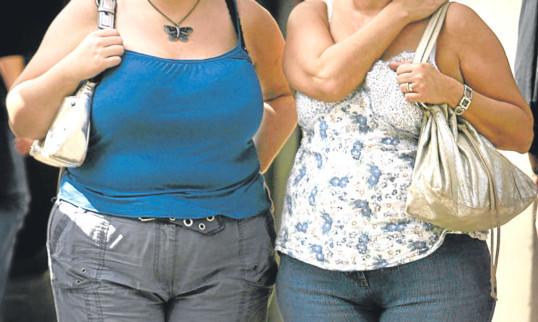
When kids are refused treatment to help them walk and cancer sufferers are denied expensive life saving drugs, it feels wrong for the NHS to consider spending millions on weight loss ops for the obese.
I know that people who are morbidly overweight will end up costing us all millions because they are far more likely to suffer from diabetes, heart disease and other illnesses.
Under a new scheme, doctors could be told to give more than a million overweight diabetics stomach reductions like gastric bypasses. Each operation costs around £5000. You do the maths. It will not be cheap.
I know it is scary that around two thirds of adults, and a third of our kids in the UK are overweight or obese, and being fat is becoming the norm. I’m not taking about being a wee bit tubby, or having a bit of a tummy. These are people who are dangerously unhealthy, and who will die before their time.
While we urgently need to tackle the crisis, I’m not sure free ops are the way ahead. Gastric ops are actually not guaranteed to make people lose weight and keep it off. There are no quick fixes to shedding stones and pounds, and it has to come down to a change of lifestyle.
I battled with my weight for decades and it is only over the past few years since I started going to a regular exercise class and embraced a much more healthy eating plan that I have lost weight. But much more importantly the pounds haven’t crept back on again.
I honestly don’t believe there is a magic bullet when it comes to losing fat. It’s very simple. You need to cut down on portion size and unhealthy food, especially sugary snacks and drinks, and get off your bottom and exercise. I completely recognise that some people are genuinely ill and can’t help the fact that they have piled on weight. There are others who have psychological problems and their relationship with food is skewed.
Clearly they need help and support, but let’s be honest, the vast majority of people who are fatter than they should be have piled on the pounds because they love grub and can’t be bothered to do any exercise.
I know because I was the same.
Food is one of the great joys of life. This week our chef on my TV show made a peanut butter and jelly cheesecake that probably contained about 5000 calories a slice and I would have happily sat and ate the whole thing with endless cups of tea while watching the Coronation Street omnibus.
Curries, fish and chips, pies, pizzas, baguettes stuffed with chicken and mayonnaise. All of these things are fabulous. I still eat them, just not every day.
I reckon gastric surgery should be the very last option in the fight against flab. Patients should have at least tried all other ways to lose weight before being given the operation, and be talked through the side effects and potential dangers of surgery.
If they haven’t changed their attitude to food and exercise the procedure simply won’t succeed, but will have cost the NHS (ie you and me and all the other tax payers) a fortune.
While I am all for people being given incentives to lose weight, they also have to take responsibility and help themselves.
No doctor would want to explain to the parents of a sick child that there’s no treatment available because the budget has been used up on weight-reducing operations for the overweight patients in his care.

Enjoy the convenience of having The Sunday Post delivered as a digital ePaper straight to your smartphone, tablet or computer.
Subscribe for only £5.49 a month and enjoy all the benefits of the printed paper as a digital replica.
Subscribe